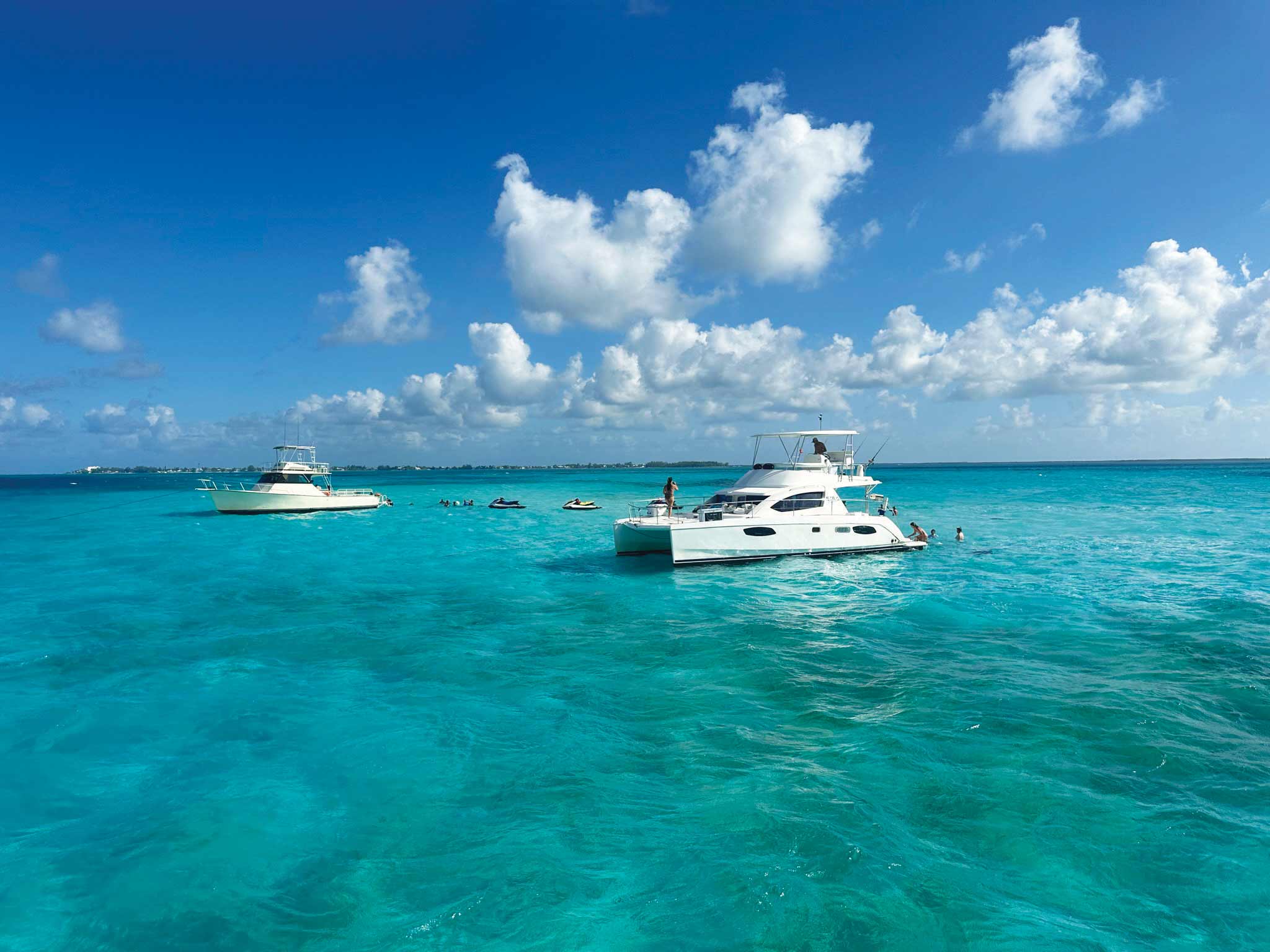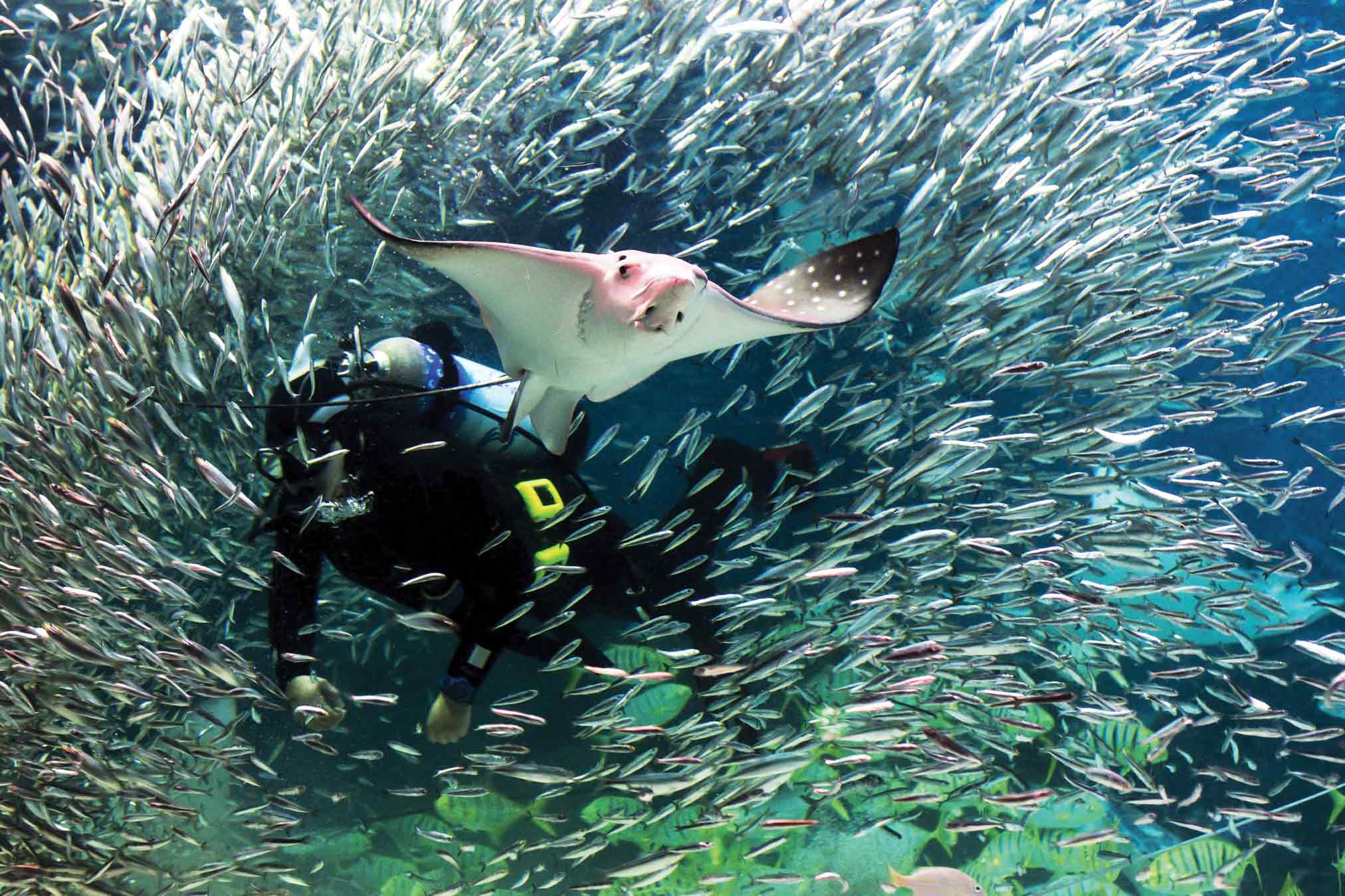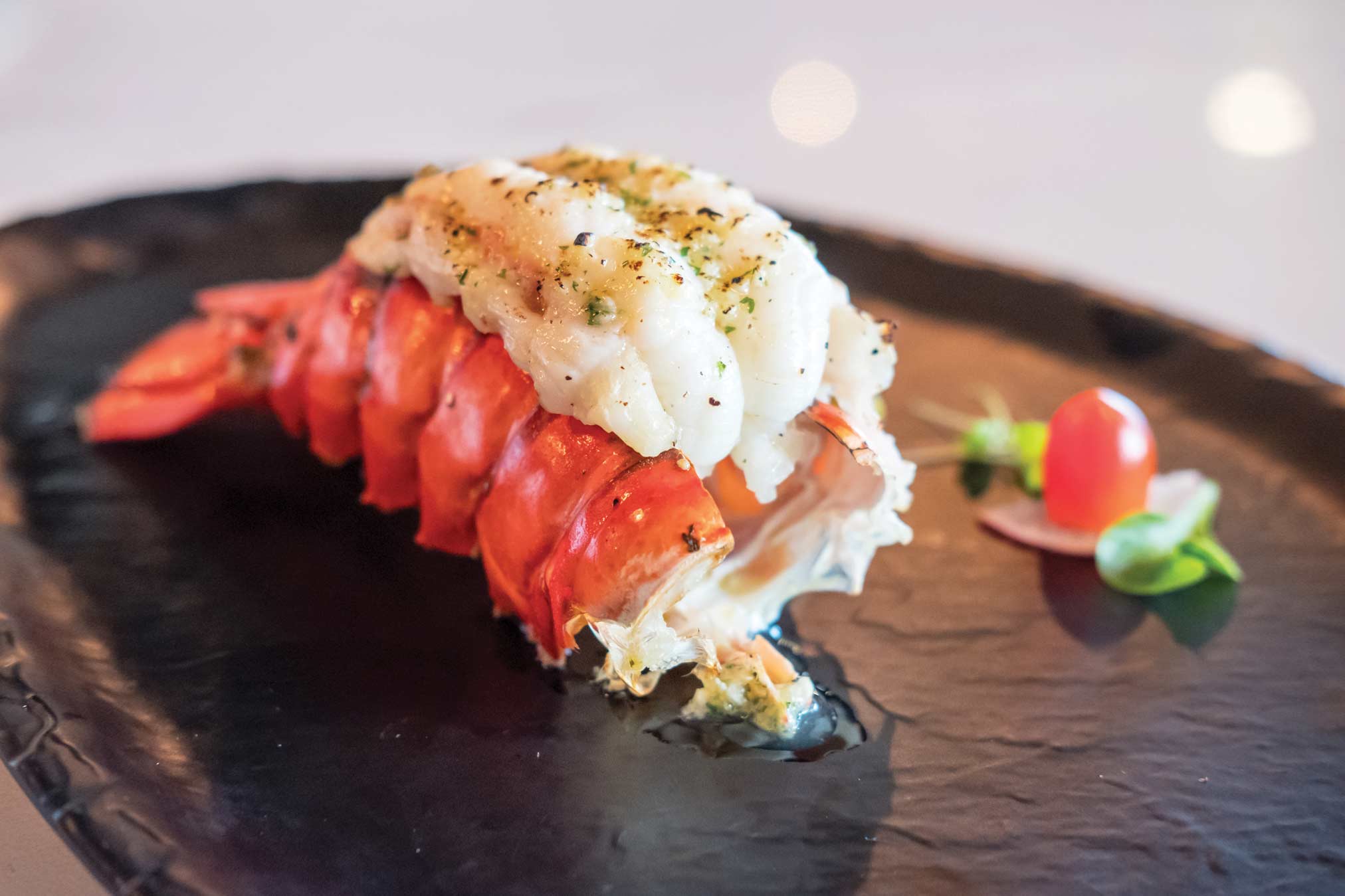By Scott Laird
the surface, one could be forgiven for thinking of Grand Cayman, the largest of the Cayman Islands, as a typical Caribbean island. After all, it has all the hallmarks—a gorgeous white sand beach, shimmering aquamarine surf, multicultural Caribbean culture.
But visitors who spend time on the island will notice something a bit different from other Caribbean islands, and it’s hard to quite put a finger on it. Perhaps it’s the destination’s commitment to food culture, with a focus on international fusion, local ingredients when possible, and a large expat culinary staff bringing celebrated cooking styles from around the world.

It could also be the uncrowded feeling. Although Grand Cayman receives calls from cruise ships, the local government has thus far resisted building large piers or expansive docking facilities to accommodate the industry’s largest ships. So, for now, cruise tourism is limited to a handful of ships each day, and generally from medium-sized ships (the large behemoth vessels carry too many passengers to shuttle passengers from offshore, where the ships anchor during their calls).
Or perhaps it’s simply the island’s natural beauty—long preserved. The Cayman Islands were one of the first islands in the Caribbean to designate large portions of land and surrounding ocean as nature preserves, limited impacts from tourism and other commercial development.
Where to Stay
Most of the hotels and resorts on Grand Cayman are clustered along Seven Mile Beach, a wide beach where soft white sand gently slopes into the warm, bright waters of the Caribbean. The Westin Grand Cayman Seven Mile Beach Resort & Spa occupies a prime position on the beach with picture postcard views up and down both ends of the famous stretch of sand. The resort has the island’s largest resort pool complete with swim-up bar, and a number of restaurants serving fresh seafood straight from the sea.
Visitors seeking a personalized, luxury stay can book The Ritz-Carlton, Grand Cayman, with plush bedding and rooms inspired by mid-century British Caribbean design. The Cayman Islands are a self-governing territory of the United Kingdom, and British culture still reigns here—especially at The Ritz-Carlton, where guests can enjoy traditional afternoon tea complete with finger sandwiches and sweet treats from the hotel’s pastry team.
For a contemporary beachfront hotel, the Kimpton Seafire Resort & Spa Seven Mile Beach is just the ticket. Particularly well-suited for large family groups are the beachfront bungalows—separate buildings nestled right next to the ocean or secluded by the pool, housing a set of expansive suites, complete with kitchenettes and dining rooms for six. There are also Family Suites available in the main building featuring bunk beds and two separate baths.

What To Do
One of the most popular activities on Grand Cayman is a visit to Stingray City, a shallow sandbar in the lagoon where stingrays congregate. Visitors can wade into the water and hold the stingrays for photos. Many of the tour operators will include roundtrip transportation from area hotels. Many of the trips to Stingray City (operators range from large group tours to intimate luxury yachts) also make snorkeling stops at a nearby reef.
Another popular stop on many of the dayboat excursions is Rum Point, a white sand beach with shallow waters for wading and calm surf. There are several bars and restaurants lining the beach, and the frozen beverage the Mudslide was invented here in the 1970s. Visitors can spend the afternoon with their toes in the sand enjoying a mudslide or another beverage with beachfront bar fare.
Turtle lovers and families will enjoy the Cayman Turtle Centre. Visitors can stop in for a short visit to see and learn about turtle conservation, and take a photo opportunity with year-old turtles called yearlings, stop into the Predator Reef for close up views inside a shark tank, and visit the aviary to see colorful Caribbean and Grand Cayman endemic birds, including the Cayman Parrot—the national bird of the Cayman Islands. Longer stays allow for swimming and snorkeling in the Turtle Lagoon and access to the Turtle Twister waterslide.
To explore more nature, visit the Queen Elizabeth II Botanic Park. Visitors can stroll through the Floral Colour Garden, a curated garden of tropical flowers picked for their vibrant colors, followed by The Heritage Garden, designed to showcase plants that figure prominently in the history of the Cayman Islands. There’s also a dedicated orchid garden, which includes four orchid species that are only found on Grand Cayman. But the most popular attraction at the garden is the Blue Iguana Habitat, part of the National Trust’s Blue Iguana Conservation Programme. Here, visitors can see the famous blue iguanas in their captive breeding grounds, which helped bring them back from the brink of extinction.

Where to Dine
The quality and variety of food available on Grand Cayman is some of the best in the Caribbean—in fact, the islands bill themselves as the Culinary Capital of the Caribbean. The Cayman Islands are known for a large, diverse expatriate workforce—not only in hospitality, but in other sectors, so the islander’s global tastes are well looked after by a global cadre of culinary professionals, working everywhere from top resorts to local restaurants, offering virtually all types of global cuisine in addition to long cherished Caribbean favorites.
With a visitor profile that skews toward the luxury end, many restaurants are accustomed to serving to top standards. Vegetarians will typically find a number of available alternatives, and most restaurants are eager to accommodate dietary restrictions.
For the island’s largest selection of gins, including its own bespoke Orange Blossom variety, visit Anchor & Den at the Marriott Grand Cayman Resort & Spa. The hotel’s beverage program by famed mixologist David Rios employs the hotel’s selection of gins and other liquors from around the world into complex, inventive flavors.
Visitors should also indulge in oceanfront dining during their visit. Restaurants like The Wharf, Grand Old House, and the laid-back Rackam’s Grill have dining rooms set right over the water, and encourage guests to toss their leftovers to the tarpon fish in the waters below.
Representative dishes of local Caymanian cuisine include Conch Stew (which is the national dish of the Bahamas, but the recipe varies slightly on Grand Cayman), Cayman-Style Lobster (here it’s often curried or cooked with Scotch Bonnet Peppers and hot sauce), or “Heavy Cake” made with cassava root. Other favorites include Fish & Fritters or Cayman-style Beef, which is stewed, shredded, and tossed with hot spices.
One of the best places to seek out Cayman-style cuisine and global gastronomy is at the Camana Bay shopping and dining development.
Good To Know
The Cayman Islands are a self-governing British Overseas Territory. Once part of Jamaica, the islands elected to remain a British Territory after Jamaica declared independence in the 1960s. Culturally, the islands are similar to other parts of the British Caribbean—cars drive on the left (although many of the vehicles are imported from North America, with the steering wheels on the left), and British spellings and vocabulary are used in local language.
The Cayman Islands issue their own currency, the Cayman Islands Dollar, which at press time is worth roughly 20% more than the US Dollar. US Currency is also widely accepted on the island at a set exchange rate.
Many Caymanian business and dining establishments require shoes and coverups over a bathing suit.
Some non-resort restaurants and grocery stores close on Sundays.
Tipping practices in the Cayman Islands are similar to those elsewhere in North America and the Caribbean, although it’s worth noting that many restaurants automatically add gratuity to every check, so be sure to check totals carefully to avoid tipping twice. Otherwise, tip servers and resort staff similarly to how you might in the United States.


